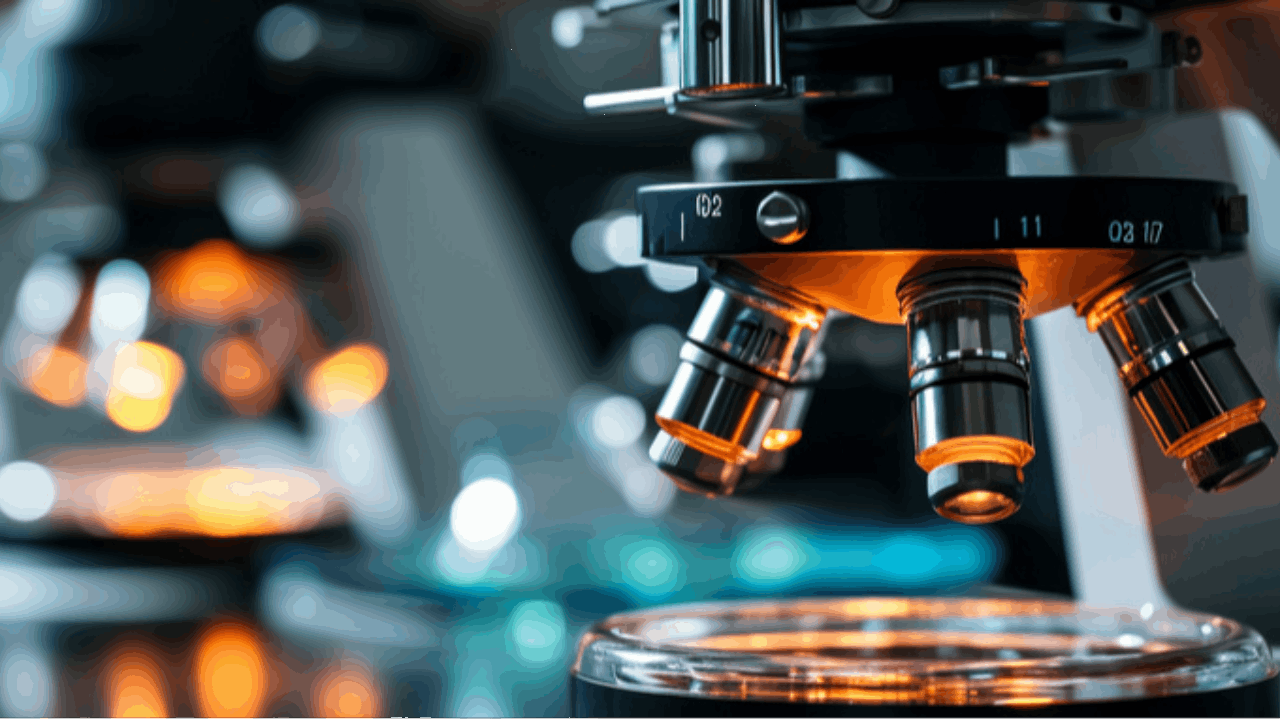预约演示
更新于:2025-05-07
C5 x VEGFR
更新于:2025-05-07
关联
1
项与 C5 x VEGFR 相关的药物作用机制 C5抑制剂 [+1] |
非在研适应症- |
最高研发阶段临床1/2期 |
首次获批国家/地区- |
首次获批日期1800-01-20 |
1
项与 C5 x VEGFR 相关的临床试验CTR20250853
一项评估玻璃体内注射 OCUL101 在新生血管性年龄相关性黄斑变性、糖尿病性黄斑水肿和继发于年龄相关性黄斑变性的地图样萎缩患者中安全性、耐受性、药代动力学、药效学和初步疗效的剂量递增、剂量扩展的 I/II 期研究
Ⅰ期:即研究的第1部分和第2部分,评估玻璃体内注射(IVT)OCUL101 在新生血管性年龄相关性黄斑变性(nAMD)安全性、耐受性。
Ⅱ期:即研究的第3部分,评估OCUL101 在新生血管性年龄相关性黄斑变性(nAMD)、糖尿病性黄斑水肿(DME) 和继发于年龄相关性黄斑变性的地图样萎缩GA患者的代动力学(PK)、药效学(PD)和初步疗效。
开始日期2025-04-01 |
100 项与 C5 x VEGFR 相关的临床结果
登录后查看更多信息
100 项与 C5 x VEGFR 相关的转化医学
登录后查看更多信息
0 项与 C5 x VEGFR 相关的专利(医药)
登录后查看更多信息
7
项与 C5 x VEGFR 相关的文献(医药)2024-02-01·American Journal of Perinatology4区 · 医学
Complement Activation Fragments in Cervicovaginal Fluid Are Associated with Intra-Amniotic Infection/Inflammation and Spontaneous Preterm Birth in Women with Preterm Premature Rupture of Membranes
4区 · 医学
Article
作者: Lee, Se Jin ; Hong, Subeen ; Lee, Young Eun ; Park, Kyo Hoon ; Park, Yehyon ; Kim, Hyeon Ji ; Kim, Yu Mi
2023-01-01·Autoimmunity Reviews
Complement activation predicts negative outcomes in COVID-19: The experience from Northen Italian patients.
Review
作者: Spaggiari, Lucia ; Tedesco, Francesco ; Pregnolato, Francesca ; Salvarani, Carlo ; Meroni, Pier Luigi ; Lonati, Paola Adele ; Hollan, Ivana ; Bonacini, Martina ; Croci, Stefania ; Rossi, Alessandro ; Cugno, Massimo ; Ferrigno, Ilaria ; Hetland, Geir ; Besutti, Giulia ; Borghi, Maria Orietta
2022-02-01·The American Journal of Pathology2区 · 医学
Vascular Endothelial Cells Produce Coagulation Factors That Control Their Growth via Joint Protease-Activated Receptor and C5a Receptor 1 (CD88) Signaling
2区 · 医学
Article
作者: Sridar, Shiva ; Nieman, Marvin ; An, Fengqi ; Cao, Devin ; Strainic, Michael G ; Schmaier, Alvin H ; Medof, M Edward ; Hussain, Wasim ; Counihan, Daniel
18
项与 C5 x VEGFR 相关的新闻(医药)2024-11-01
欢迎关注凯莱英药闻
(收集周期:10.28-11.1,国内部分为首次申请临床、首次批准上市的创新药)
国内创新药IND汇总
1、益承康泰:伊匹乌肽雾化吸入溶液
作用机制:p55PIK抑制剂
适应症:消炎药
10月28日,益承康泰的伊匹乌肽雾化吸入溶液的临床试验申请(IND)获CDE受理。伊匹乌肽(Epivotide)是公司自主研发的一种高选择性p55PIK抑制剂,具有广谱抗炎功效,对人体的毒副作用非常小。p55PIK是磷脂酰肌醇3-激酶(PI3K)的一种亚型,PI3K信号通路在调节细胞生长、运动、存活、代谢和血管生成过程中起着重要作用。研究发现,由于深度参与了炎症过程(血管通透性,炎症参与细胞增殖,炎症细胞趋化和浸润),PI3K信号通路的过度活跃与多种炎症和自身免疫性疾病的发生和进展有显著的相关性。
2、莱恩医药:1D228片
作用机制:c-Met/Trk抑制剂
适应症:癌症
10月28日,莱恩医药的1D228片的IND获CDE受理。1D228是一款靶向c-Met和TRK的新型激酶抑制剂,可同时靶向肿瘤细胞和血管内皮细胞,表现出优异的抗肿瘤活性。体外模型实验发现,1D228对癌细胞增殖和迁移的抑制作用明显优于阳性药物tepotinib,可显著抑制体内c-Met和TRK原癌基因(TRKB)双表达肿瘤的肿瘤生长。此外,体内实验胃癌(MKN45细胞系)和肝癌(MHCC97H细胞系)肿瘤模型中,1D228都表现出显著的肿瘤抑制作用。重要的是,与tepotinib治疗相比,在MHCC97H和MKN45异种移植肿瘤模型中,1D228治疗显示出更强的抗肿瘤活性和更低的毒性。
3、欧科健生物:OCUL101注射液
作用机制:靶向C5/VEGFR双抗
适应症:脉络膜新生血管
10月30日,欧科健生物的OCUL101注射液的IND获CDE受理。OCUL101是一款靶向C5/VEGFR的双抗,不仅能够有效稳定和控制血管增生,减少视网膜血管末端的渗漏,且疗效不仅限于对VEGF抗体治疗敏感的患者,更有望惠及对VEGF抗体治疗无效的nAMD患者。一项评估眼内注射(IVT) OCUL101治疗续性视网膜新生血管化(PRNV或DL-AAA)兔模型中的疗效研究显示,所有治疗组的PRNV模型眼在治疗后两周内均观察到PRNV部位无血管造影泄漏现象。在荧光血管造影(FA)分析中,与安慰剂相比,OCUL101对PRNV泄漏的抑制效果在持续时间和强度上均有所差异。阳性对照组(PC组)的泄漏复发主要发生在治疗后约6~8周,而OCUL101组则延迟约12~16周。
4、环码生物:HM2002注射液
作用机制:——
适应症:缺血性心脏病
10月30日,环码生物的HM2002注射液的IND获CDE受理。HM2002是一种创新环形RNA(circRNA)药物,用于治疗性血管再生,以治疗缺血性心脏病。临床前研究显示,在心肌梗死动物模型中,HM2002注射液能够促进血管再生,减少梗死和纤维化面积,显著改善心功能。
5、MedRegen:MRG-001注射液
作用机制:CXCR4拮抗剂;CaN/FKBP12分子胶
适应症:免疫调节和组织再生疗法
10月31日,MedRegen的MRG-001注射液的IND获CDE受理。MRG-001是普乐沙福与他克莫司形成的复方制剂,临床前研究表明,MRG-001可以改善伤口愈合,促进组织再生,防止同种异体移植排斥反应。一项I期试验显示,MRG-001在选定剂量范围内是安全的,没有明显的实验室异常;中剂量组对白细胞、干细胞和免疫调节细胞的作用最显著。
6、派金生物:PJ008注射液
作用机制:——
适应症:苯丙酮尿症
10月31日,派金生物的PJ008注射液的IND获CDE受理。PJ008通过MAS-PEG平台的专有基因改造,再经定向聚乙二醇修饰得到PL5。目前,该药物已完成结构筛选,通过体内评价;研究显示该药物具有低免疫原性、可实现每周一次皮下给药。
7、柯君医药:苯磺酸CG-0255胶囊
作用机制:P2Y12受体拮抗剂
适应症:血栓
11月1日,柯君医药的苯磺酸CG-0255胶囊的IND获CDE受理。CG-0255是新型抗血小板药物,是基于氯吡格雷活性成分设计的世界第一个巯基前药,也是世界上第一个既可以口服,也可以静脉注射的P2Y12抑制剂。CG-0255创新性地通过羧酸酯酶转化生成活性代谢产物 H4,这与氯吡格雷通过 CYP 酶转化生成的活性代谢产物 H4 相同。此外,CG-0255 无需通过 CYP 酶发挥抗血小板作用,有望使得存在 CYP 酶功能缺失的广大患者受益。
一项在健康受试者中评估其安全性和耐受性,以及药物代谢动力学和药效学的数据显示:(1)CG-0255药物的个体差异性低于氯吡格雷,其中注射剂型起效时间小于15分钟,口服剂型起效时间小于30分钟。(2)口服剂型2 mg低剂量组血小板聚集抑制率约40%,和氯吡格雷300 mg组药效相当。注射和口服剂型的剂量-药效关系都比较明确。(3)CG-0255不经过CYP代谢,减少了药物之间的相互作用;可以和其他经CYP代谢的药物安全联用。(4)注射剂型可以一次推注给药,不需要持续滴注,且药效持续超过一天。
8、诺华:PIT565注射液
作用机制:靶向CD3/CD2/CD19三抗
适应症:肿瘤、自身免疫性疾病
11月1日,诺华的PIT565注射液的IND获CDE受理。PIT565是一款靶向CD3/CD2/CD19三抗药物,具有潜在同类首创的作用机制,目前正开发用于包括B细胞急性淋巴细胞白血病、B细胞淋巴瘤、系统性红斑狼疮、非霍奇金淋巴瘤在内的多个适应症。与 CD3 双特异性抗体相比,通过 PIT565 进行的 CD2 共刺激可以克服 T 细胞耗竭并增加患者的反应深度和持续时间;研究显示:(1)在采用 CD19+ 肿瘤细胞和原代T细胞共培养的重定向 T 细胞细胞毒性 (RTCC) 体外试验中,与对照双特异性产品相比,PIT565 在肿瘤细胞杀伤和增殖中介导更持久的 T 细胞活性。(2)在人外周血单核细胞过继转移模型中,PIT565 在已建立的弥漫性大 B 细胞淋巴瘤肿瘤模型中,表现出比对照双特异性产品更强的抗肿瘤反应。(3)在安全性和药理学研究中,PIT565 在食蟹猴中表现出 IgG 样药代动力学和与 CD3 双特异性产品相似的预期药理学和耐受性特征。
国内创新药上市获批
1、葛蓝新通:甲磺酸普雷福韦片
作用机制:核苷类似物
适应症:乙型肝炎
10月28日,葛蓝新通的甲磺酸普雷福韦片的上市申请获得NMPA批准,用于治疗成人慢性乙型肝炎。甲磺酸普雷福韦(甲磺酸帕拉德福韦)是一款采用HepDirectTM前药技术开发的阿德福韦(PMEA)的前药。该药在血液及非靶器官稳定,使其代谢产物的组织暴露量低;口服进入靶器官肝脏后释放活性代谢产物,提高了抗病毒效率,抗耐药性也更强,同时还解决了阿德福韦酯肾毒性大的问题。III期临床试验与富马酸替诺福韦二吡呋酯(TDF)头对头比较研究显示,其结果达到预期,各项疗效指标与对照组一致或好于对照,尤其对高病毒载量病人的应答率治疗组中的疗效更为突出。
2、礼来:匹妥布替尼片
作用机制:BTK 抑制剂
适应症:套细胞淋巴瘤
10月29日,礼来的匹妥布替尼片的上市申请获得NMPA批准,用于既往接受过布鲁顿氏酪氨酸激酶(BTK)抑制剂治疗的复发或难治性套细胞淋巴瘤(MCL)成人患者。匹妥布替尼(pirtobrutinib)是一款非共价、具高度选择性的BTK抑制剂,是获FDA批准的首个非共价(可逆转)BTK抑制剂,同时也是首个获批用以治疗已对BTK共价抑制剂产生抗性的MCL患者的BTK抑制剂。与前两代BTK共价抑制剂不同,pirtobrutinib与C481没有直接的相互作用,对BTK的选择性更高,可减少治疗产生的不良事件,有望解决前两代BTK抑制剂耐药问题。研究显示,在MCL患者中,接pirtobrutinib治疗患者的总缓解率为50%,分别有13%与38%的患者达到了完全缓解和部分缓解,中位缓解时间为1.8个月(0.8-4.2),中位缓解持续时间为8.3个月,6个月DOR率为65.3%。
全球新药III期临床汇总
感谢关注、转发,转载授权、加行业交流群,请加管理员微信号“hxsjjf1618”。
“在看”点一下
临床申请
2024-09-27
·医药观澜
▎药明康德内容团队报道
根据即刻药数数据库,截至9月26日,9月以来至少有7家致力于创新药研发的中国公司宣布完成新一轮融资。这些获得资本市场青睐的新锐公司正在致力于小分子、siRNA药物、重组蛋白药物、碱基编辑NK细胞治疗药物、iPSC衍生的细胞疗法的研发,以及基于补体领域的大分子药物、基于离子通道靶点的药物研发等。
盛世泰科
轮次:C轮融资首关
融资金额:超亿元
9月3日,盛世泰科宣布完成超亿元C轮融资首关,投资方为同人博达,所募集资金将用于其1类新药产品森格列汀的商业化及后续创新管线的临床开发。盛世泰科致力于差异化小分子创新药研发,已搭建覆盖降糖、抗癌和自身免疫等丰富的创新管线,其中新一代高选择性DPP-4抑制剂森格列汀即将获批上市。
盛世泰科还有多款肿瘤管线进入临床阶段,其中新一代小分子CXCR4拮抗剂CGT-1881正在开发用于造血干细胞动员,FGFR/VEGFR双靶点抑制剂CGT-6321正在开发治疗实体瘤,新一代ALK抑制剂CGT-9475有望解决肺癌治疗中耐药性和脑转移等临床痛点。其中,CGT-1881与CGT-9475已获得FDA的临床许可。
赫吉亚生物
轮次:A2轮
融资金额:数千万元
9月3日,赫吉亚生物(Hygieia )宣布完成数千万元人民币A2轮融资,由黄埔生物医药基金领投,南湾百澳基金跟投。赫吉亚生物致力于siRNA领域递送技术平台的构建及药物研发,建立了siRNA药物开发平台,管线布局覆盖乙肝、代谢功能障碍相关脂肪性肝炎(MASH)、心脑血管及代谢性疾病、补体介导相关疾病、神经系统疾病等。
根据赫吉亚生物新闻稿,该公司已授权复星医药旗下星曜坤泽治疗慢性乙型肝炎病毒感染的siRNA药物,已分别获NMPA和FDA许可进入临床,并在1期临床中显示了良好安全性、耐受性及疗效潜力。该公司另两款管线也处于1期研究阶段,分别为用于治疗高脂蛋白(a)血症的管线Kylo-11,以及双靶向肝脏的THRβ激动剂管线Kylo-0603。
君合盟生物
融资轮次:B+轮
融资金额:2亿元
9月10日,君合盟生物宣布完成超2亿元B+轮融资,由国投创合领投,弘盛资本、元禾控股、新氧集团、合君医药跟投。本轮融资资金将主要用于推进其在研管线开发,快产品管线产业化及商业化推广。君合盟生物专注于重组蛋白创新药物及合成生物学领域创新产品开发,管线围绕严肃医疗、消费医疗、代谢等蛋白药物领域,包括重组I/III型人胶原蛋白原液及制剂、重组A型肉毒毒素等。
晶蛋生物
融资轮次:A轮
融资金额:数千万元
9月13日,晶蛋生物宣布完成数千万人民币A轮融资。本轮融资由勤智资本领投,老股东隆门资本、粤科金融继续追加投资。晶蛋生物公司成立于2019年,是一家专注于神经精神疾病及慢性肾病的离子通道创新药研发公司,核心团队由来自哈佛大学、上海药物研究所等国际知名科研机构和制药公司,并邀请了诺贝尔生理或医学奖得主、离子通道领域奠基人Erwin Neher教授担任首席科学顾问。
根据新闻稿,晶蛋生物已经建立了独特离子通道靶点小分子和蛋白药物技术平台—IonFire平台(小分子药物)和BigC平台(大分子药物),并配套离子通道新靶点发现、活性测试、蛋白结构解析和大分子药物开发等平台。
贝斯生物
融资轮次:A2轮
融资金额:数千万元
9月13日,贝斯生物宣布完成数千万人民币的A2轮融资,由戈壁大湾区(Gobi Partners GBA)管理的AEF大湾区创业基金领投。本轮融资将用于加强贝斯生物的研发团队、优化产品管线、加速临床试验等。
贝斯生物成立于2021年,致力于基因编辑领域基础创新,以及开发创新的细胞疗法和基因编辑产品,用于治疗癌症和遗传疾病。今年7月,贝斯生物首款产品NK510——一款基于碱基编辑技术的自然杀伤细胞(NK)产品已经向中国NMPA申报IND并获得受理。除了NK510之外,贝斯生物的产品管线还包括多个针对血液恶性肿瘤和自身免疫疾病的碱基编辑NK细胞产品,以及通用CAR免疫疗法和体内基因编辑产品。
星赛瑞真
融资轮次:天使轮
融资金额:数千万元
9月14日,星赛瑞真宣布完成数千万元天使轮融资,并正式启动了天使+轮融资计划。本轮融资由复星医药旗下复健资本新药创新基金和创瑞投资嘉兴创琰基金共同投资,融资资金将用于星赛瑞真核心管线和平台的持续推进,以及公司团队及研发实验室建设。
星赛瑞真成立于2022年7月,由复健资本新药创新基金孵化。该公司致力于不断通过再生医学技术创新和iPSC器官移植替代产品研发,为等待器官移植的患者带来新的治疗选择。星赛瑞真正在推进多个重点研发项目,包括iPSC衍生的角膜内皮细胞产品(CRG-101),即将推进至临床申报阶段,以及iPSC衍生的胰岛细胞管线CRG-002。该公司还建成了3个iPSC再生医学技术平台,包括CRG-iPSC(体细胞重编程平台), CRG-EDIT(基因编辑平台)和CRG-XDIF(干细胞多向分化平台)。
天辰生物
融资轮次:B2轮
融资金额:近亿元
9月24日,天辰生物宣布成功完成近亿元B2轮融资,本轮融资由启明创投领投,现有股东追加投资。通过本轮融资,天辰生物将推进核心项目在中国的临床研究,加速产品上市进程,并助力国际布局。天辰生物成立于2020年,是一家致力于过敏和补体领域大分子创新药开发的中国生物技术公司。
今年6月,天辰生物领先项目新一代抗IgE抗体药物LP-003注射液启动治疗季节性过敏性鼻炎患者的3期临床试验,该产品具有用量低、超长效等特点;而LP-005则是潜在“first-in-class”C5与C3补体双功能抗体,已启动阵发性睡眠性血红蛋白尿症(PNH)的2期临床试验。根据天辰生物官网,该公司临床前在研管线还包括AAV介导的补体抑制剂LP-008项目,拟开发治疗年龄相关性黄斑变性(AMD)等。
参考资料:
[1]各家公司官网及公开资料
本文来自药明康德内容团队,欢迎个人转发至朋友圈,谢绝媒体或机构未经授权以任何形式转载至其他平台。转载授权及其他合作需求,请联系wuxi_media@wuxiapptec.com。
免责声明:药明康德内容团队专注介绍全球生物医药健康研究进展。本文仅作信息交流之目的,文中观点不代表药明康德立场,亦不代表药明康德支持或反对文中观点。本文也不是治疗方案推荐。如需获得治疗方案指导,请前往正规医院就诊。
siRNA临床1期上市批准临床申请细胞疗法
2024-04-01
3月25日,阿斯利康宣布FDA已经批准Ultomiris(ravulizumab-cwvz)新适应症上市,用于治疗抗水通道蛋白4(AQP4)抗体阳性(Ab+)视神经脊髓炎(NMOSD)。新闻稿指出,这是首款也是唯一一款能够使得此类患者摆脱复发的长效C5补体抑制剂。Ultomiris是一款长效补体C5抑制剂,最早于2018年12月获FDA批准上市,用于治疗阵发性睡眠性血红蛋白尿症(PNH);2021年9月,Ultomiris新适应症获FDA批准,用于治疗非典型溶血性尿毒症综合征(aHUS)的成人及儿童(一个月以上)患者;2022年4月,Ultomiris第3项适应症获FDA批准,用于治疗成人全身型重症肌无力(gMG)。本次新适应症获批主要是基于一项III期CHAMPION-NMOSD研究数据。
近日,Esperion公司宣布,美国FDA基于CLEAR Outcomes研究的积极数据,批准了Nexletol(bempedoic acid)和Nexlizet(bempedoic acid/ezetimibe)扩展适应症,用于在一级预防和二级预防群体中降低心血管疾病风险和进一步降低低密度脂蛋白胆固醇(LDL-C)。此外,扩展标签支持Nexletol和Nexlizet作为单药或者与他汀类药物联合使用。它们还获批作为单药或与他汀类药物联用,治疗原发性高脂血症。新闻稿指出,这是首款获批用于一级预防人群的非他汀类LDL-C降低药物。Esperion公司表示,FDA的批准有望让能够从Nexletol和Nexlizet获益的群体增长7倍。
3月25日,Axsome宣布AXS-12(瑞波西汀)治疗发作性睡病的III期SYMPHONY研究达到了主要终点,即AXS-12可以显著降低发作性睡病患者的猝倒频率。SYMPHONY研究是一项随机、双盲、多中心、安慰剂对照临床试验(n=90),评估了AXS-12(5mg,第1周每日1次,第2-5周每日2次)在发作性睡病患者中的疗效和安全性。研究的主要终点为每周猝倒发作频率的变化,关键次要终点为日间嗜睡(EDS)的严重程度(通过临床医生整体印象-严重程度(CGI-S)量表评分客观评估,通过Epworth嗜睡量表(ESS)评分主观评价)变化。结果显示,与安慰剂组相比,AXS-12组患者每周猝倒发作频率较基线显著降低(-83% vs. -66%,p=0.018)。并且,在第1周时AXS-12即可迅速降低患者的猝倒发作频率(-56% vs. -31%,p=0.007)。此外,AXS-12不仅提高了达到猝倒缓解(定义为猝倒发作频率降低100%)的患者比例(33% vs. 9.5%,p=0.008)还增加了无猝倒症状的天数(+84.5% vs. +22.6%,p=0.014)。AXS-12是一种高选择性且强效的去甲肾上腺素再摄取(NET)抑制剂和皮质多巴胺调节剂。此前,AXS-12已被获批用于治疗抑郁症。
近日,Stoke Therapeutics公布其在研反义寡核苷酸(ASO)疗法STK-001在两项1/2a期试验与两项开放标签扩展(OLE)试验中,治疗Dravet综合征儿童和青少年患者的积极数据。分析显示,STK-001在给药后3个月可显著且持久地降低患者癫痫发作频率达85%,且药物的耐受性良好。Stoke将与监管机构讨论相关随机对照注册研究计划,以进一步推动STK-001的开发。所公布的1/2a期研究是多中心、开放标签试验,旨在检视STK-001用于治疗2-18岁Dravet综合征儿童和青少年患者的安全性、耐受性、药代动力学特性与潜在疗效。1/2a期研究结束时数据显示,在使用现有抗癫痫药物之外接受70 mg STK-001治疗患者的癫痫发作频率显著且持久下降。在最后一次给药后3个月,患者癫痫发作中位下降85%(n=10),6个月时中位下降74%(n=9)。此外,OLE研究分析显示,12个月时,患者在多种认知和行为测量中观察到具有临床意义的改善,包括Vineland适应性行为量表(VINELAND-3)中的多个参数,这些结果支持STK-001具有改变疾病进展的潜力。
3月27日,Viking Therapeutics公司宣布,该公司的口服疗法VK2735在治疗肥胖症的1期临床试验中获得积极结果,接受最高剂量治疗的参与者在28天后体重减少5.3%。VK2735是一种双重激动剂,针对胰高血糖素样肽-1(GLP-1)和葡萄糖依赖性促胰岛素多肽(GIP)受体,目前正在开发用于治疗肥胖等代谢紊乱。基于这些1期试验结果,该公司计划在今年晚些时候,启动VK2735口服剂型治疗肥胖的2期临床试验。这项为期28天的剂量递增研究结果突显了口服VK2735治疗的积极临床活性。接受VK2735治疗的患者队列显示出剂量依赖性体重减少,与基线相比最高达到5.3%(4.9公斤)。接受VK2735治疗的队列与安慰剂相比也显示平均体重减少,最高可达3.3%。对于在28天后至少达到体重减轻5%的受试者比例的探索性评估显示,57%接受最高剂量VK2735治疗的受试者实现了≥5%的体重减轻,而安慰剂组这一数值为0%。基于对体重减轻轨迹的初步评估,该公司认为,治疗持续时间如果超过28天可能会进一步减少体重。口服VK2735显示出良好的安全性和耐受性。在接受VK2735治疗的受试者中,所有治疗后出现的不良事件(TEAEs)均为轻度或中度,其中大多数(76%)报告为轻度。基于积极的体重减轻以及安全性和耐受性结果,该公司已决定在此研究中继续进一步剂量升级。Viking还计划在2024年下半年,针对肥胖患者启动口服VK2735的2期试验。
3月28日,Novocure公司宣布,3期临床试验METIS达到了其主要终点,显示采用肿瘤治疗电场(TTFields)疗法和支持性护理相结合,与支持性护理相比,在含1-10个脑转移灶的非小细胞肺癌(NSCLC)患者中,显著延长患者无颅内进展的时间。接受肿瘤治疗电场和支持性护理治疗的患者,其中位无颅内进展的时间为21.9个月,而仅接受支持性护理的患者这一数值为11.3个月(n=298,HR=0.67,P=0.016)。Novocure公司开发的肿瘤治疗电场利用调制到特定频率的电场,让细胞分裂中需要在细胞中移动到特定位置的极性分子无法正常移动,从而破坏细胞分裂,抑制肿瘤的生长。肿瘤治疗电场不会刺激或加热组织,对健康细胞造成的损伤极小,轻度至中度皮肤刺激是报告的最常见副作用。它已经获得美国FDA的批准,用于治疗恶性胸膜间皮瘤和胶质母细胞瘤。在中国也获得批准治疗胶质母细胞瘤。这一治疗模式还在多项临床试验中与其它疗法联用,治疗肝癌、胃癌、胰腺癌、脑转移瘤等多种癌症类型。再鼎医药拥有这一疗法在大中华区的开发权益。
近日,Syndax Pharmaceuticals宣布,美国FDA接受其为在研疗法revumenib递交的新药申请(NDA)并授予其优先审评资格,用于治疗携带KMT2A重排(KMT2Ar)的复发/难治性急性白血病患者。Revumenib是一款潜在“first-in-class”的menin抑制剂。该NDA的提交得到了来自关键性临床试验AUGMENT-101的积极数据的支持,该试验研究了revumenib对携带KMT2Ar的急性髓系白血病(AML)和急性淋巴细胞白血病(ALL)成人和儿科患者的疗效。如先前报告,该试验在中期分析中达到了主要终点,在携带KMT2Ar的急性白血病人群中,57名可评估患者中有23%(13/57;95% CI:12.7,35.8,单边p=0.0036)达到完全缓解(CR)或带部分血液学恢复的完全缓解(CRh)。在达到CR/CRh且进行了最小残留病(MRD)评估的患者中,70%的患者MRD为阴性。此外,患者中的总缓解率(ORR)达到63%(36/57)。Revumenib是一种针对menin-KMT2A相互作用的强效、选择性小分子抑制剂。Revumenib已被FDA和欧洲委员会授予孤儿药资格,用于治疗AML患者,并被FDA授予快速通道资格,用于治疗携带KMT2A重排或NPM1突变的成人和儿科复发/难治性急性白血病患者。Revumenib还被FDA授予突破性疗法指定,用于治疗携带KMT2A重排的成人和儿科复发/难治性急性白血病患者。
3月28日,吉利德科学宣布,美国FDA已批准Vemlidy(tenofovir alafenamide)片剂的补充新药申请(sNDA),用于每日一次(25 mg)治疗六岁及以上儿童慢性乙型肝炎病毒(HBV)患者。这些患者的体重至少25公斤,并患有代偿性肝病。Vemlidy获批准用于治疗这一儿科患者群体主要是基于一项2期临床试验(试验1092)长达96周数据的支持。该试验在18名年龄在6岁至12岁以下、未接受治疗和经历过治疗的患者中比较了Vemlidy(25 mg)与安慰剂的治疗效果,这些患者的体重至少25公斤。分析显示,Vemlidy组患者与在第24周后转用Vemlidy的安慰剂组患者,在整个96周试验期间的病毒抑制率均呈逐步增加。
3月29日,Lipocine公司宣布其潜在“first-in-class”疗法LPCN 1148用于治疗肝硬化患者的2期临床研究顶线结果。分析显示,试验达成主要终点,Lipocine计划与美国FDA会面,讨论该药物上市的开发路径。这项2期概念验证研究是一项随机安慰剂对照研究,对象是肝移植候补名单上的肝硬化男性患者,这些患者具有肌肉减少症共病。该研究的主要终点是第24周时L3-骨骼肌指数(SMI)的变化,L3-SMI是用以估计全身骨骼肌质量的指标,患者在基线以及第12、24、36和52周时接受SMI的分析。关键次要终点包括肝性脑病发生率以及LPCN 1148的安全性/耐受性。分析结果显示该试验达到主要终点,患者在第24周观察到SMI增加一直维持到52周。在改用LPCN 1148后安慰剂组患者的SMI增加。此外,LPCN 1148治疗期间,患者发生明显肝性脑病(OHE)事件较少,且首次复发OHE事件的时间亦较长。安全性方面,LPCN 1148耐受性良好,不良事件发生率和严重程度与安慰剂相似,且LPCN 1148组受试者住院天数较少。LPCN 1148是一种在研口服疗法,包含十二烷酸睾酮(testosterone dodecanoate),这是一种独特的雄激素受体激动剂。LPCN 1148开发用以治疗肝硬化和相关共病,包括肌肉减少症和OHE,为潜在"first-in-class"疗法。
3月29日,百时美施贵宝(Bristol Myers Squibb)宣布其KRAS G12C抑制剂Krazati(adagrasib)于治疗带有KRAS G12C突变的非小细胞肺癌(NSCLC)患者的关键3期验证试验KRYSTAL-12达到无进展生存期(PFS)的主要终点和总缓解率(ORR)的关键次要终点。KRYSTAL-12是一项开放标签、多中心、随机3期研究,旨在评估Krazati与单独标准护理化疗相比,在KRAS G12C突变的NSCLC患者中的疗效与安全性。该研究的主要终点是经盲法独立中央审评(BICR)评估的PFS,次要终点包括总生存期(OS)、ORR、缓解持续时间(DOR)和安全性。这项验证性试验的结果表明,与标准护理化疗相比,Krazati作为这些患者的二线或后续疗法在PFS和ORR方面表现出统计学上显著且具有临床意义的益处。没有观察到Krazati有新的安全信号,安全数据与已知的安全概况一致。Krazati是一款具有高度特异性的强力口服KRAS G12C抑制剂,经过优化设计具有持久的靶点抑制能力。Krazati具有长达24小时的半衰期和广泛的组织分布,而且能够穿过血脑屏障,有助于最大限度地发挥药物效力。2021年6月,美国FDA授予它突破性疗法认定,并在2022年12月获FDA加速批准上市,用于治疗携带KRAS G12C突变的经治非小细胞肺癌患者。Krazati最初由Mirati Therapeutics所开发,去年10月百时美施贵宝以48亿美元款项收购Mirati,同时囊获此款疗法。再鼎医药则拥有Krazati在大中华区的研究、开发、生产及独家商业权利。
3月25日,康方生物宣布,其与合作伙伴Summit Therapeutics在2024年欧洲肺癌大会(ELCC)上联合发布了PD-1/VEGF双抗依沃西联合化疗或单药治疗脑转移非小细胞肺癌(NSCLC)的疗效分析结果。结果显示,依沃西对NSCLC脑转移的颅内肿瘤控制效果极具临床潜力,有望成为NSCLC脑转移患者的全新高效治疗选择。2022年12月,康方生物以总交易额高达50亿美元(5亿美元首付款),外加销售净额两位数提成的合作方案,授予Summit公司在美国、欧洲、加拿大和日本的开发依沃西的独家许可权。
3月25日,凡恩世(Phanes Therapeutics)宣布,美国FDA授予其PT886快速通道资格,用于治疗转移性Claudin 18.2阳性胰腺癌患者。PT886是一款在研的双特异性抗体,靶向Claudin 18.2和CD47,拟开发用于治疗胃癌、胃食管交界处癌和胰腺癌。根据凡恩世公开资料介绍,PT886可通过巨噬细胞的ADCP活性和NK细胞的ADCC活性直接杀伤肿瘤细胞,并通过同时靶向肿瘤细胞表面高表达的Claudin 18.2和CD47扩大肿瘤杀伤范围。目前,PT886在美国的多中心1期临床试验(TWINPEAK研究)正在评估PT886在局部晚期或转移性胃腺癌、胃食管交界处癌和胰腺癌患者中的安全性、耐受性、药代动力学和初步疗效。
3月25日,石药集团发布公告,宣布其开发的司美格鲁肽注射液已获国家药品监督管理局批准,可在中国开展用于减少热量饮食和增加体力活动的基础上对成人超重或肥胖患者的体重管理适应症的临床试验,也是该产品继成人2型糖尿病患者的血糖控制后,获批临床试验的第二个适应症。司美格鲁肽是目前减重领域的最大单品,且仍在快速增长。2017年12月,司美格鲁肽首次获FDA批准上市用于治疗2型糖尿病,随后又获批了降低心血管风险事件风险、肥胖症新适应症。2021年4月,司美格鲁肽首次在国内批准上市,同时斩获了2型糖尿病及降低伴有心血管疾病的2型糖尿病成人患者的主要心血管不良事件风险两项适应症。
14.恒瑞医药2款抗癌药拟纳入突破性治疗品种
3月25日,中国国家药监局药品审评中心(CDE)官网公示,恒瑞医药申报的氟唑帕利胶囊和甲磺酸阿帕替尼片拟纳入突破性治疗品种,针对适应症为:氟唑帕利单药或联合阿帕替尼治疗gBRCA突变的HER2阴性乳腺癌。氟唑帕利是恒瑞医药研发的1类创新药,为一种新型口服PARP抑制剂。该药已经在中国获批用于胚系BRCA1/2(gBRCA1/2)突变的铂敏感复发性卵巢癌治疗,以及铂类敏感复发性卵巢癌维持治疗,无论胚系BRCA1/2突变状态如何。阿帕替尼是恒瑞医药研发一种高选择性的靶向血管内皮细胞生长因子受体2(VEGFR2)的抗血管生成药物,已经在中国获批单药治疗晚期胃腺癌或胃-食管结合部腺癌、晚期肝细胞癌,以及联合卡瑞利珠单抗治疗不可切除或转移性肝细胞癌。此外,它在卵巢癌和乳腺癌等多种实体肿瘤中均显示良好的活性和安全性。
3月25日,中国国家药监局药品审评中心(CDE)官网公示,罗氏(Roche)申报的GDC-0077(即inavolisib)拟纳入突破性治疗品种,针对适应症为:与哌柏西利和内分泌疗法联合用药适用于治疗PIK3CA突变、激素受体(HR)阳性、人表皮生长因子受体2(HER2)阴性的局部晚期或转移性乳腺癌成人患者。公开资料显示,inavolisib是一款靶向PI3Kα突变体的选择性抑制剂。PIK3CA基因突变在大约40%的HR阳性乳腺癌中被发现,会导致肿瘤生长失控、疾病进展和对内分泌治疗的耐药性。Inavolisib是一种具有双重作用机制的口服疗法,具有高度的体外PI3Kα抑制效力和选择性,且能够特异性触发PI3Kα蛋白突变体的分解。
3月25日,再生元(Regeneron)宣布,已收到美国FDA就其CD3/CD20双抗odronextamab治疗复发/难治性(R/R)滤泡性淋巴瘤(FL)和R/R弥漫性大B细胞淋巴瘤(DLBCL)的BLA申请发出的完整回复函(CRL)。再生元表示唯一原因是确证临床的入组状态问题,而与疗效或安全性、临床设计、标签或生产问题无关。由于此项BLA是基于I期ELM-1研究和II期ELM-2研究的积极结果。因此,按照规定,再生元应该药物批准之前完成确证性试验OLYMPIA的患者入组工作。据再生元介绍,作为最大的淋巴瘤临床项目OLYMPIA的一部分,公司一直在积极招募odronextamab的多个III期试验患者。OLYMPIA项目旨在改变几种B细胞非霍奇金淋巴瘤亚型的治疗模式(包括早期治疗线),FDA也同意了该项目,同时要求试验要包括剂量发现和确证性试验部分。剂量发现部分的患者入组已经开始,但CRL要求确证性试验部分也应该正在进行中,同时试验完成的时间表也要在重新提交申请之前达成一致。再生元表示公司将致力于与FDA和研究人员密切合作,尽快将odronextamab带给R/R FL和R/R DLBCL患者。
3月25日,广州赛隽生物科技有限公司(下简称“赛隽生物”)自主研发的CG-BM1异体人骨髓间充质干细胞注射液,正式获得国家药品监督管理局药品审评中心的药物临床试验批准(下简称“IND”),获批的临床研究适应症为:缺血性脑卒中。这是赛隽生物三年内第三个获批IND的自研产品,此前获批适应症为“急性呼吸窘迫综合征”和“慢加急性肝衰竭”产品, 目前临床试验进展顺利。
3月26日,恒瑞医药宣布在2024年欧洲肺癌大会(ELCC)公布了由同济大学附属东方医院周彩存教授牵头开展的CameL-sq研究的4年长期随访结果。最新生存数据显示:卡瑞利珠单抗联合化疗一线治疗晚期驱动基因阴性鳞状非小细胞肺癌4年总生存期(OS)率为33.9%,较化疗组(14.3%)提升了近20%。卡瑞利珠单抗是一种人源化IgG4单克隆抗体,对PD-1具有高亲和力,已证明在多种晚期实体肿瘤治疗研究中具有生存获益。在3期CameL-sq试验中,卡瑞利珠单抗+化疗作为一线治疗可显著延长晚期鳞状NSCLC患者的无进展生存期(PFS)。
3月27日,中国国家药监局药品审评中心(CDE)官网公示,和黄医药递交了赛沃替尼片新适应症上市申请,并获得受理。根据和黄医药近期发布的年度报告,该公司计划于2024年年初提交用于一线及二线治疗MET外显子14跳跃突变非小细胞肺癌患者的中国新药上市申请,有望将在中国的适应症拓展到包括一线患者。此前,赛沃替尼已经于2021年在中国获批上市,用于治疗接受全身性治疗后疾病进展或无法接受化疗的MET外显子14跳跃突变的非小细胞肺癌患者。赛沃替尼是一种高选择性口服MET抑制剂,正广泛地于MET驱动的肺癌、胃癌和乳头状肾细胞癌患者群体中进行临床开发。
3月27日,SELLAS生命科学集团(SELLAS Life Sciences Group)公布了其新型高选择性CDK9抑制剂SLS009与维奈托克(venetoclax,ven)和阿扎胞苷(azacitidine,aza)联合治疗对维奈托克治疗无效或不再有效的复发/难治性(r/r)急性髓系白血病(AML)患者的2a期临床试验积极结果。分析显示,SLS009展现强大的抗白血病活性。首位参与该研究并获得完全缓解(CR)的患者仍在试验当中,并在加入后9个月内保持无白血病状态。主要分析结果显示:接受每周一次45 mg SLS009治疗患者的缓解率为10%(剂量水平低于推荐2期剂量[RP2D])。接受每周一次60 mg SLS009治疗患者的缓解率为20%。接受每周两次30 mg SLS009治疗患者的缓解率为50%。试验中观察到SLS009具有很强的抗白血病活性。在接受所有剂量水平的患者中,67%患者的骨髓母细胞减少50%或更多。首位参与该研究并获得完全缓解的患者仍在试验当中,并在加入后9个月内保持无白血病状态。SLS009与aza/ven组合在所有测试剂量水平下均具有良好的耐受性。SLS009是一款高选择性小分子CDK9抑制剂,已在多种人类细胞系和疾病动物模型中展现较好的诱导凋亡和抗增殖活性,可有效抑制多种动物模型的肿瘤生长,并显著延长生存期。临床前实验数据显示,SLS009对CDK9蛋白的选择性抑制率超过其他CDK亚型100倍以上,具有与Bcl-2抑制剂维奈托克协同治疗的潜力。
3月27日,Nanoscope Therapeutics宣布,其基于光遗传学的在研基因疗法MCO-010在2b期临床试验RESTORE中达到主要和关键性次要终点,显著改善患者视力。MCO-010旨在无需考虑基因突变类型,治疗因晚期视网膜色素变性(RP)导致的永久性严重视力损失。基于这些积极结果,该公司计划在今年下半年向美国FDA递交生物制品许可申请(BLA)。试验结果显示,在第52周时,接受高剂量MCO-010治疗(提高0.337 LogMAR; p=0.021)或低剂量MCO-010治疗(提高0.382 LogMAR;p=0.029)的患者组与安慰剂对照组相比,最佳矫正视力(BCVA)获得统计学上显著改善。在研究的第52周后,视觉功能的改善持续或增加,展示了单次玻璃体内注射MCO-010的持久效果。这些结果与早期1/2a期开放标签研究中观察到的结果一致。该公司计划将高剂量MCO-010作为商业化剂量。
3月27日,中国国家药监局药品审评中心(CDE)官网公示,百时美施贵宝申报的纳武利尤单抗联合伊匹木单抗拟纳入优先审评,针对适应症为一线治疗不可切除或转移性微卫星高度不稳定性(MSI-H)或错配修复缺陷型(dMMR)结直肠癌患者。伊匹木单抗是一款CTLA-4抗体,纳武利尤单抗是一款PD-1抑制剂。根据百时美施贵宝于今年1月公布的临床研究(CheckMate-8HW)数据,与化疗相比,两药联合疗法一线治疗MSI-H/dMMR表型的mCRC患者,将疾病进展或死亡风险降低了79%。结直肠癌(CRC)是发生在结肠或直肠的恶性肿瘤,这两个器官均为人体消化系统的一部分。当DNA复制过程中负责修复错配错误的蛋白质缺失或丧失功能时,即会出现dMMR表型,从而导致MSI-H肿瘤。公开资料显示,大约5%~7%的转移性结直肠癌患者有dMMR或MSI-H肿瘤,他们不太可能从传统的化疗中获益,通常预后较差。今年1月,百时美施贵宝在美国临床肿瘤学会 (ASCO)消化肿瘤研讨会上口头报告了CheckMate-8HW研究的最新数据。这是一项3期随机、开放标签研究,评估了纳武利尤单抗联合伊匹木单抗(双免疫联合疗法组),对比纳武利尤单抗单药或研究者选择的化疗方案(mFOLFOX-6或FOLFIRI方案,联合或不联合贝伐珠单抗或西妥昔单抗)治疗MSI-H或dMMR表型的转移性结直肠癌患者的疗效。
3月28日,中国国家药监局药品审评中心(CDE)官网显示,安斯泰来(Astellas)提交的注射用维恩妥尤单抗和默沙东提交的帕博利珠单抗的上市申请获得受理。维恩妥尤单抗是一款靶向Nectin-4的抗体偶联药物(ADC),由安斯泰来和Seagen公司(已被辉瑞收购)联合开发,帕博利珠单抗是默沙东开发的一款抗PD-1单抗。根据安斯泰来新闻稿,本次申报的是维恩妥尤单抗与帕博利珠单抗联合用药的补充生物制剂许可申请(sBLA),拟用于一线治疗既往未经治疗的局部晚期或转移性尿路上皮癌成年患者。
3月28日,Beckley Psytech公司宣布,在研疗法BPL-003在治疗耐药性抑郁症(TRD)的2a期开放标签临床试验中获得积极结果。初步结果显示,单剂BPL-003治疗耐受性良好,在TRD患者中迅速起效并维持持久的抗抑郁效果。BPL-003是一种具有致幻作用的5-MeO-DMT的创新配方,可通过鼻腔给药。这项研究调查了单剂10毫克的BPL-003与心理支持联用,在中重度TRD患者中的安全性、耐受性和疗效。初步分析显示,单剂量BPL-003在给药后第二天就让55%的患者产生应答(定义为MADRS评分降低超过50%)。抗抑郁效果持久,第4周保持55%的应答率,并持续到第12周。第4周有55%的患者处于临床缓解(remission)状态,定义为MADRS评分小于10分。第12周有45%患者处于临床缓解状态。BPL-003显示出良好的安全性和耐受性。药物的急性效应平均在不到两小时内消退。这些数据表明,与目前正在开发的其他迷幻药物相比,BPL-003可能只需更短的诊所治疗时间。这项研究的第二部分扩展研究目前正在招募使用稳定剂量口服抗抑郁药的TRD患者,以评估BPL-003共同给药的安全性和有效性。
3月28日,荣昌生物制药(烟台)股份有限公司(股票代码:688331.SH / 09995.HK)宣布,其自主研发的VEGF/FGF双靶点融合蛋白类创新药RC28-E取得阶段性重大进展:一项治疗糖尿病性黄斑水肿(DME)的Ⅲ期临床试验已完成全部患者入组。该研究是多中心、随机、双盲、阳性对照的Ⅲ期临床试验,旨在评估RC28-E注射液治疗糖尿病性黄斑水肿(DME)患者的有效性和安全性。研究主要终点为52周时,研究眼最高矫正视力(BCVA)相较于基线的变化均值。糖尿病性黄斑水肿(DME)是由黄斑区毛细血管渗漏导致的视网膜增厚,主要影响中心视力。DME可发生在糖尿病视网膜病变(DR)的任何阶段。
近日,Adaptimmune Therapeutics宣布其在研工程化T细胞疗法afami-cel的关键性2期临床研究SPEARHEAD-1的积极数据发表于《柳叶刀》当中。美国FDA已接受afami-cel的生物制品许可申请(BLA),并授予其优先审评资格。该申请的PDUFA日期为2024年8月4日。如果获得批准,afami-cel将成为首款用于治疗实体瘤的工程化T细胞疗法,也是十多年来治疗滑膜肉瘤的首个有效疗法。试验的中位随访时间为32.6个月。所有患者的总缓解率(ORR)为37%(19/52;95% CI:24-51),其中滑膜肉瘤患者的ORR为39%(17/44;95% CI:24-55),粘液样圆细胞脂肪肉瘤患者的ORR为25%(2/8;95% CI:3-65)。安全性方面,52例患者中有37名(71%)发生细胞因子释放综合征(一例为3级事件)。
3月29日,Ironwood Pharmaceuticals宣布,在研疗法apraglutide在治疗类固醇难治性胃肠道急性移植物抗宿主病(SR GI aGVHD)患者的探索性临床试验STARGAZE中获得积极结果。Apraglutide表现出良好的安全性和耐受性,并且大部分患者在接受治疗后第28天和第56天产生应答。Apraglutide是一款长效胰高血糖素样肽-2(GLP-2)类似物,最初由VectivBio公司开发。该试验的主要目标是评估一周一次的apraglutide,在接受标准治疗(包括皮质类固醇和利妥昔单抗)的SR GI aGVHD患者中的安全性和耐受性。本次试验观察到的安全性和耐受性与标准治疗和已知GLP-2类似物的安全性一致。除了评估安全性外,次要终点使用下消化道和全器官反应来评估疗效,根据Mount Sinai急性GVHD国际协作组织(MAGIC)分级系统进行评估。大多数患者在第28天和第56天产生应答。在第28天出现下消化道应答的所有患者在第56天和第91天应答得到维持。Apraglutide是一种新一代、人工合成的长效GLP-2类似物,用于一系列GLP-2在疾病病理生理学中可以发挥中心作用的罕见胃肠疾病,包括短肠综合征合并肠功能衰竭(SBS-IF)和急性移植物抗宿主病。
3月28日,驯鹿生物宣布该公司自主研发的全人源靶向BCMA的CAR-T产品伊基奥仑赛注射液(研发代号CT103A)的一项新适应症临床试验申请获中国国家药品监督管理局(NMPA)批准,拟扩大适应症用于治疗既往经过1-2线治疗且来那度胺耐药的复发/难治性多发性骨髓瘤患者。多发性骨髓瘤(MM)是最常见的血液系统肿瘤之一,是一种克隆性浆细胞异常增殖的恶性疾病。对于初治的多发性骨髓瘤患者,常用的一线治疗包括多种药物组合的诱导治疗、巩固治疗和维持治疗,以及自体造血干细胞移植(ASCT)等。对于大多数的患者,疾病缓解后也会不可避免地进入复发、难治的治疗困局。伊基奥仑赛注射液是一种靶向BCMA的CAR-T产品,此前已于2023年6月在中国获批上市,用于治疗既往经过至少3线治疗后进展(至少使用过一种蛋白酶体抑制剂及免疫调节剂)的复发或难治性多发性骨髓瘤成人患者。
3月28日,华昊中天宣布,其核心产品优替德隆注射液获得美国FDA授予的孤儿药资格,用于治疗乳腺癌脑转移。值得一提的是,华昊中天的优替德隆口服胶囊也于今年3月获得FDA授予的孤儿药资格,用于治疗胃癌。晚期乳腺癌根据分子分型不同,有超过1/3的患者会发生脑部转移。现有的部分乳腺癌治疗大分子药物无法通过血脑障,导致药效受限。外科手术、放射治疗等局部治疗手段被视为脑转移治疗的首选,然而乳腺癌脑转移患者生存期依然偏短,三阴性乳腺癌脑转移患者的中位生存期则更短。优替德隆为一种基于合成生物学技术研发上市的化疗新分子,其与紫杉类作用机制相似,但却拥有多方面优势,包括:活性更强、抗癌谱更广、无明显血液学毒性、不易产生耐药性、对紫杉等多药耐药肿瘤依然有效、能够透过血脑屏障、基因工程菌发酵生产环境友好、可口服给药。优替德隆注射液已经于2021年在中国获批上市,用于治疗既往接受过至少一种蒽环类或紫杉类药物化疗方案的复发或转移性乳腺癌患者。
3月25日,诺和诺德和Cardior Pharmaceuticals宣布,诺和诺德同意以约合11亿美元的价格收购后者,包括一笔预付款,以及在实现某些开发和商业里程碑后的额外付款。Cardior是一家临床阶段生物医药公司,致力于发现和开发基于RNA的治疗药物,旨在预防、修复和逆转心脏疾病。其主要技术平台为靶向非编码RNA(ncRNA)的新型RNA疗法。ncRNA失调会导致有害的细胞重塑,损害整个心脏功能,引起心脏衰竭,在细胞中具有重要调控作用。Cardior领先项目CDR132L是一种靶向micro-RNA-132的基于寡核苷酸的ncRNA抑制剂,目前正在开展治疗心力衰竭的II期临床。此前在《欧洲心脏杂志》上发表的一项Ib期临床数据显示,CDR132L安全且耐受性良好。此外,与安慰剂相比,接受CDR132L治疗的心力衰竭患者心脏功能有所改善。
3月25日,百奥赛图(北京)医药科技股份有限公司,一家创新技术驱动抗体类新药研发的国际性生物技术公司宣布与ABL Bio Inc.,一家处于临床阶段开发新型肿瘤和中枢神经系统疾病疗法的韩国生物技术公司达成合作,共同开发新型双特异性抗体偶联药物(双抗ADC)。百奥赛图RenLite®小鼠平台可产生识别不同表位且亲和力高的全人抗体。该平台以产生共同轻链抗体为特色,使双抗ADC的开发具有设计上的灵活性、简易的生产流程和良好的成药性。基于该平台,未来双方的合作可能会拓展到不同形式的ADC药物开发。
3月26日,维智基因(Verge Genomics)和Ferrer宣布达成一项战略合作,共同开发Verge的主要候选药物VRG50635,用于在欧洲、中南美洲、东南亚和日本治疗散发性和家族性肌萎缩侧索硬化症(ALS)。VRG50635是一种针对PIKfyve的潜在“best-in-class”小分子抑制剂。新闻稿指出,VRG50635是首批进入临床的完全由人工智能(AI)平台发现和开发的药物之一。该合作将Verge用于靶点发现和药物开发的“all-in-human”技术平台,及其在临床试验方面的创新,与Ferrer在临床开发、制造和商业化方面的专长相结合。根据协议条款,Ferrer将获得在美国以外的多个地区共同开发和商业化VRG50635治疗ALS的独家权利。Verge保留了在美国和协议以外的所有国家和地区中,VRG50635开发和商业化的所有权利。根据协议,Verge可能获得高达1.125亿欧元的预付款和潜在里程碑付款。
3月26日,Nuvation Bio和葆元医药宣布,两家公司已达成最终协议,Nuvation Bio以全股票交易方式收购葆元医药。Nuvation Bio是一家生物制药公司,旨在通过开发差异化和新颖的治疗候选药物以满足肿瘤治疗中亟需的要求。葆元医药是一家致力于为癌症患者开发新型精准疗法的全球性临床阶段生物制药公司。根据葆元医药新闻稿,收购交割后,在完全稀释的基础上,葆元医药的前股东将持有Nuvation Bio约33%的股份,而Nuvation Bio的现有股东将持有Nuvation Bio约67%的股份。收购预计将于2024年第二季度完成。根据新闻稿,本次收购将使Nuvation Bio成为一家拥有多个后期阶段临床开发项目的全球性肿瘤医药公司。
3月27日,Moderna在疫苗日活动上披露,其最近与黑石生命科学公司(Blackstone Life Sciences )达成了一项开发和商业化资助协议,以推进公司的流感疫苗项目。根据协议条款,黑石集团将为Moderna提供高达7.5亿美元的研发资金。而Moderna未来需要向黑石集团支付累计商业里程金和低个位数版税。Moderna表示,这笔资金将被确认为研发费用的减少,但不会导致公司2024年约45亿美元的研发框架支出发生任何变化。Moderna保留对公司流感项目的全部权利。目前,Moderna正在开发多款流感和流感联合疫苗。
3月27日,Avalo Therapeutics宣布收购AlmataBio公司并获得已进入临床2期阶段的白介素-1β(IL-1β)靶向单克隆抗体AVTX-009。同时,Avalo完成1.85亿美元的私募融资,其中包含初始前期投资1.156亿美元。该融资由Commodore Capital和TCGX领投,BVF Partners、Deep Track Capital、OrbiMed、Petrichor和RA Capital Management参与。AVTX-009是一款人源化单克隆抗体(IgG4),能够与IL-1β高度亲和地结合并抑制其活性。IL-1β是炎症反应的关键因素,其过量产生或调控失衡与多种自身免疫和炎症性疾病密切相关,是这些疾病治疗的重要、经过验证的靶点。先前的研究表明,通过抑制IL-1β,可以有效治疗化脓性汗腺炎(HS)和其他皮肤科、胃肠科、风湿科的炎症性疾病。Avalo计划持续推进AVTX-009作为治疗化脓性汗腺炎的药物开发。预计该药物针对HS的临床2期试验的主要结果将在2026年发布。
3月29日,吉利德科学公司(Gilead Sciences)和Xilio Therapeutics宣布达成一项总额可能超过6亿美元的独家许可协议,两家公司将共同开发和商业化Xilio的肿瘤激活白介素12(IL-12)蛋白XTX301,该在研药物目前处于临床1期阶段。Xilio Therapeutics是一家临床阶段生物技术公司,致力于发现和开发肿瘤激活免疫肿瘤疗法。该公司正在利用其专有的肿瘤激活平台构建一系列新型肿瘤激活分子,包括抗体、细胞因子、双特异性药物和细胞接合剂,旨在优化治疗指数并将药物的抗肿瘤活性限制在肿瘤微环境。XTX301目前正在治疗晚期实体瘤患者的1期剂量递增试验中接受评估。根据协议条款,Xilio授予吉利德开发和商业化XTX301的全球独家许可权。Xilio将收到4350万美元的预付款,并将有资格获得额外高达6.04亿美元的潜在开发、监管和销售等里程碑款项。Xilio将负责正在进行中XTX301临床1期试验的开发。在Xilio交付XTX301的指定临床数据后,吉利德可以选择获得XTX301的开发和商业化权利,并支付7500万美元的费用。在此之前,Xilio有资格获得总计高达2900万美元的额外投资和开发里程碑款项。
内容来源于网络,如有侵权,请联系删除。

临床结果上市批准临床终止优先审批First in ClassBest in Class合作
分析
对领域进行一次全面的分析。
登录
或

生物医药百科问答
全新生物医药AI Agent 覆盖科研全链路,让突破性发现快人一步
立即开始免费试用!
智慧芽新药情报库是智慧芽专为生命科学人士构建的基于AI的创新药情报平台,助您全方位提升您的研发与决策效率。
立即开始数据试用!
智慧芽新药库数据也通过智慧芽数据服务平台,以API或者数据包形式对外开放,助您更加充分利用智慧芽新药情报信息。
生物序列数据库
生物药研发创新
免费使用
化学结构数据库
小分子化药研发创新
免费使用